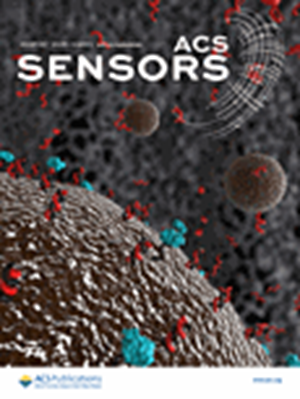Synergistic Integration of Laser Oxidation and Long Short-Term Memory for Advanced Odor Classification in Next-Generation Artificial Olfactory Systems.
IF 8.2
1区 化学
Q1 CHEMISTRY, ANALYTICAL
引用次数: 0
Abstract
Emulating and enhancing human olfactory capabilities, artificial olfactory technology provides adept detection of subtle odors, gases, and various chemical substances. Metal oxide semiconductors (MOSs) are ideal materials for next-generation artificial olfactory devices due to their outstanding gas sensing performance, characterized high sensitivity, high response speed, and robust stability, as well as their compatibility with microfabrication. For broader applications, developing a comprehensive database of diverse odorants is crucial, which necessitates expanding the types of MOS channels in artificial olfactory devices. This paper reports a laser-induced oxidation-based artificial olfactory device using a 7 × 3 sensor array composed of three metal oxides (SnO2-x, ZnOx, and WO3-x). By analyzing the response pattern of various odorants using a deep neural network, the device achieved 95.2% accuracy in classifying eight single odor molecules. Additionally, it successfully deconvoluted the types and concentrations of two odor mixtures and classified ten types of wine with accuracies of 91.3% and 92.5%, respectively. Furthermore, this study identified the proper number and arrangement of sensors for next-generation e-nose development. Our innovative artificial olfactory system can be integrated into various fields, such as the aromatic industry and virtual reality, making it a beneficial technology for future artificial olfaction applications.激光氧化和长短期记忆协同集成用于下一代人工嗅觉系统的高级气味分类。
人工嗅觉技术模仿并增强了人类的嗅觉能力,能够熟练地检测细微的气味、气体和各种化学物质。金属氧化物半导体(MOSs)具有优异的气敏性能、高灵敏度、高响应速度、高稳定性以及与微加工的兼容性,是下一代人工嗅觉器件的理想材料。为了更广泛的应用,开发一个综合的不同气味剂数据库是至关重要的,这就需要扩大人工嗅觉装置中MOS通道的类型。本文报道了一种基于激光诱导氧化的人工嗅觉装置,该装置采用由三种金属氧化物(SnO2-x、ZnOx和WO3-x)组成的7 × 3传感器阵列。通过深度神经网络分析不同气味分子的反应模式,该装置对8种单一气味分子的分类准确率达到95.2%。此外,它还成功地对两种气味混合物的类型和浓度进行了反卷积,并对10种葡萄酒进行了分类,准确率分别为91.3%和92.5%。此外,本研究确定了下一代电子鼻发展所需传感器的适当数量和排列。我们的创新人工嗅觉系统可以集成到各个领域,如芳香工业和虚拟现实,使其成为未来人工嗅觉应用的有益技术。
本文章由计算机程序翻译,如有差异,请以英文原文为准。
求助全文
约1分钟内获得全文
求助全文
来源期刊

ACS Sensors
Chemical Engineering-Bioengineering
CiteScore
14.50
自引率
3.40%
发文量
372
期刊介绍:
ACS Sensors is a peer-reviewed research journal that focuses on the dissemination of new and original knowledge in the field of sensor science, particularly those that selectively sense chemical or biological species or processes. The journal covers a broad range of topics, including but not limited to biosensors, chemical sensors, gas sensors, intracellular sensors, single molecule sensors, cell chips, and microfluidic devices. It aims to publish articles that address conceptual advances in sensing technology applicable to various types of analytes or application papers that report on the use of existing sensing concepts in new ways or for new analytes.
 求助内容:
求助内容: 应助结果提醒方式:
应助结果提醒方式:


